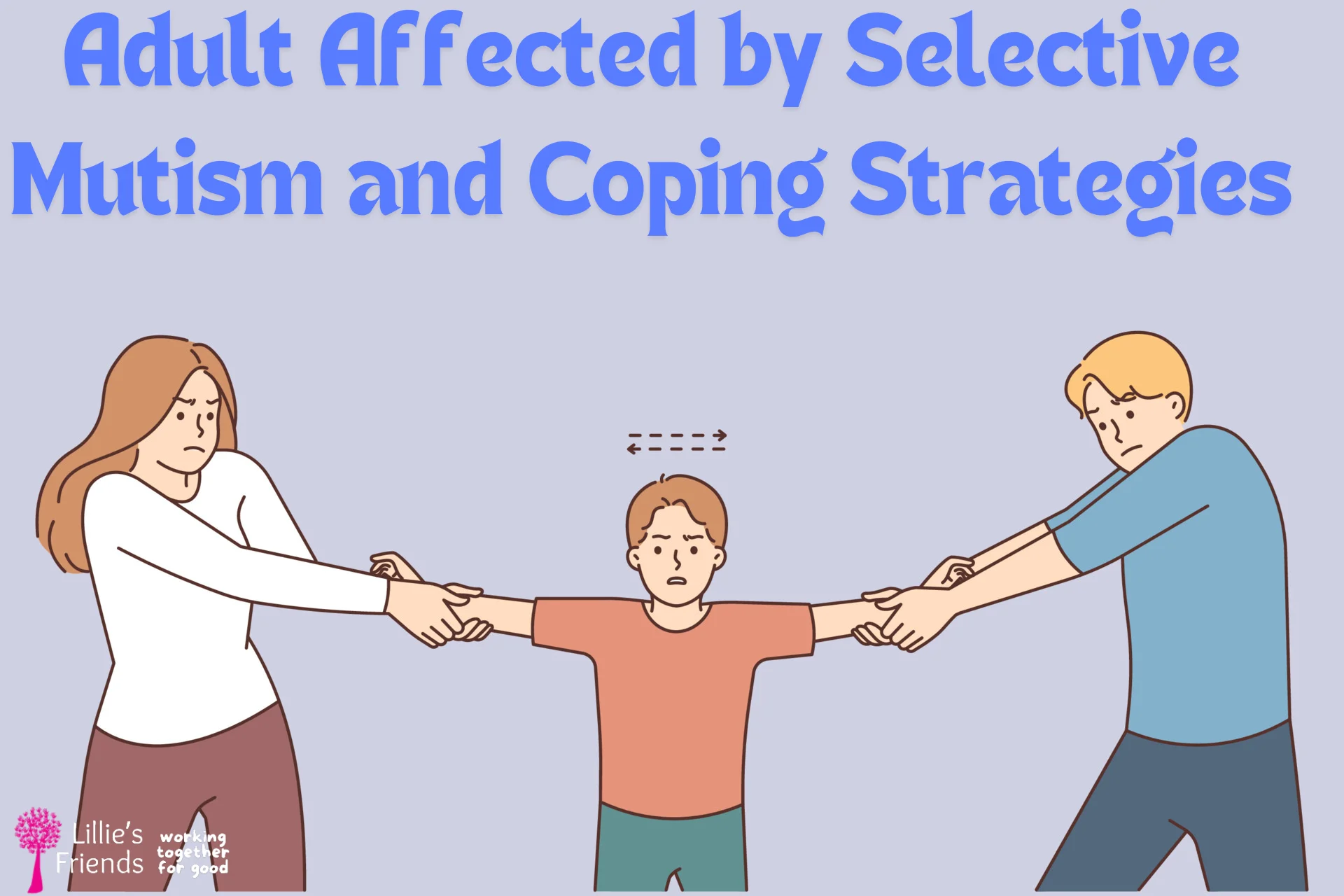Estimates of the incidence of selective mutism, a rare mental illness that mostly affects youngsters, range from 0.2% to 1.6%. On the other hand, it may persist into adulthood if untreated. Although it is often linked to social anxiety, it is a distinct mental health illness with its own special characteristics.
The ins and outs of adult selective mutism will be covered in detail in this article, along with solutions.
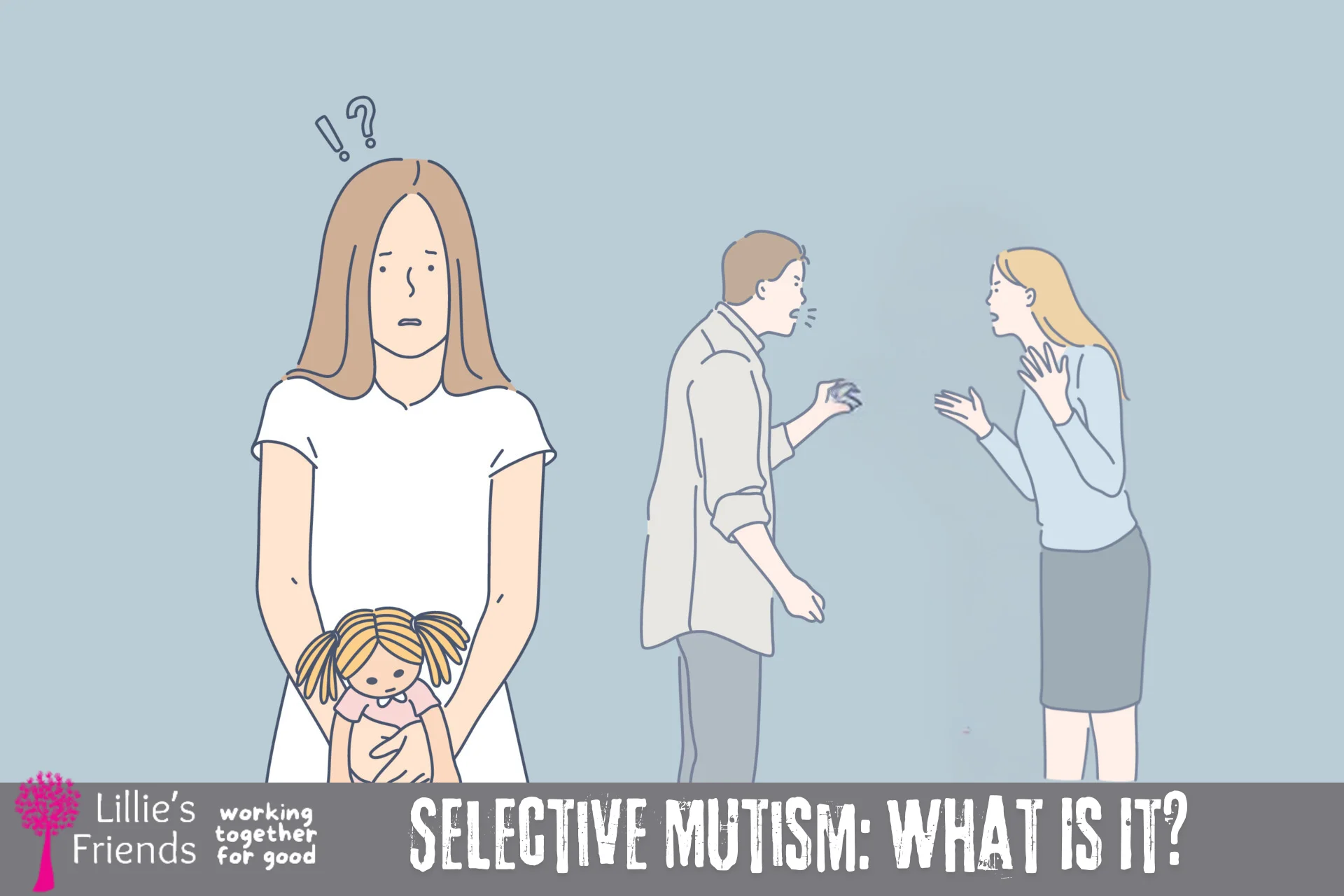
Selective Mutism: What Is It?
A psychiatric disorder known as selective mutism causes a person to become silent in certain contexts. It might occur in a family gathering, the workplace, or a school when someone is expected to contribute to the discourse but doesn’t. In every other situation, speaking comes naturally to the individual, and they express themselves fearlessly.
What Indices and Manifestations Are Associated with Adult Selective Mutism?
An adult with selective mutism may exhibit the following signs and symptoms:
- Unable to communicate in some circumstances
- Modifications in face expressions in awkward situations
- Overly timid
- Fear of rejection and social shame
- Using nonverbal cues in talks, such as pointing, nodding, writing, etc.
- Requesting that a family member or acquaintance speak in public on their behalf
- Difficulty in establishing new connections, both personally and professionally
- Crude and obsessive conduct
- Unexpected outbursts of rage
- Tenseness and rigidity
- Warped and pessimistic views
- Prolonged worry
What Are the Adult Origins of Selective Mutism?
Since selective mutism often manifests in later life, childhood influences are typically connected to the causes of selective mutism in adults. Although the precise etiology is unknown, it is linked to the following frequent triggers.
- Genes. Many mental health issues have a strong genetic component to their development; selective mutism is no different. Maternal anxiety, depression, and attachment problems often impact families. Furthermore, given the striking similarities between selective mutism and social anxiety, the same genetic factors ↗ may be at play in both disorders.
- The childhood setting. Children’s upbringing is greatly influenced by their surroundings, which may have a lasting effect on them. One risk factor for selective mutism is parents who overprotect their kids. Likewise, if any of the parents are struggling with anxiety problems, it may lead to a communication breakdown with their kids, which raises the likelihood of this illness. This illness is also often linked to childhood trauma, which some therapists refer to as traumatic mutism.
- Issues with language and speech. Selective mutism patients often have speech delay. Speech difficulties may have resulted from auditory processing issues in childhood for adults with this disease. These issues, meanwhile, are mild in nature and do not call for a separate diagnosis.
In addition to these risk factors, particular ideas about the genesis of selective mutism exist ↗. Let’s just go over them.
- Psychodynamic theory: a person may resort to silent conduct as a coping method if unresolved childhood problems are present.
- Behavioral theory: certain social cues lead to adaptive behavior modifications, which lead to mute speech in certain contexts.
- Dissociative identity theory: silent conduct is a possible symptom of many personalities present in dissociative identity disorder ↗, which may be caused by prior traumatic experiences.
- Family systems theory: this condition may be primarily caused by dysfunctional, strong attachments and detachments with parents.
- Social anxiety and social phobia: An extreme form of social anxiety characterizes selective mutism, which falls under the social phobia spectrum.
- Posttraumatic stress theory: selective mutism is associated with the dissociative symptoms of posttraumatic stress disorder (PTSD).
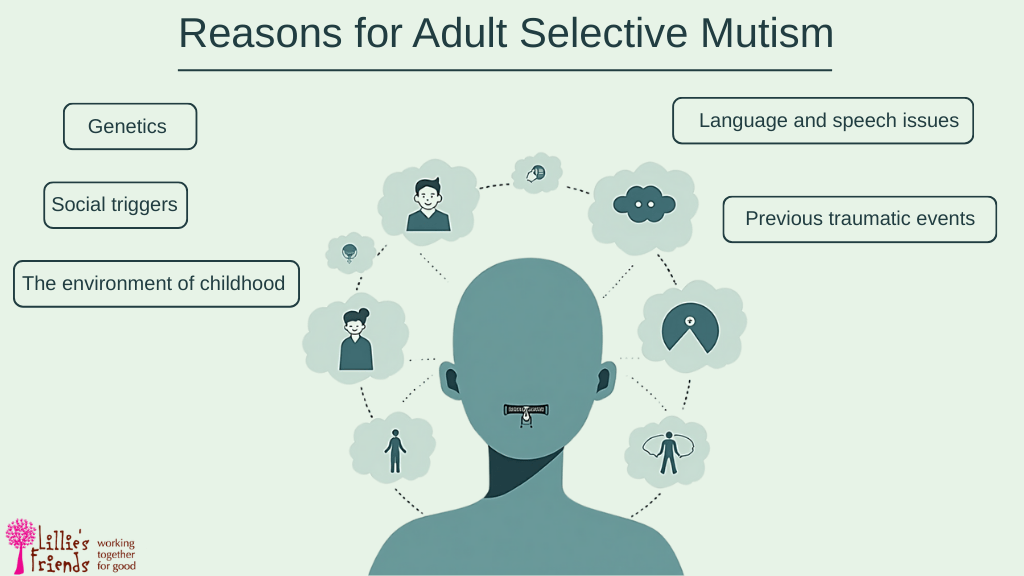
How Is Adult Selective Mutism Diagnosed?
The Diagnostic and Statistical Manual of Mental Health Disorders (DSM) formerly included selective mutism under the heading of “Disorders of childhood and adolescence.” The most recent version of the DSM (5) included selective mutism in the category of anxiety disorders due to its worrisome aspect. The most recent version of the DSM (5) has also lifted the restrictions on its diagnosis, allowing adults to receive an assessment and diagnosis.
To qualify as selectively silent, an adult must have the following characteristics:
- A consistent inability to talk in certain circumstances yet an open capacity to speak in others.
- The language barrier is not the cause of the inability to talk.
- No other mental health condition provides a more compelling explanation for the communication disruption.
- The signs and symptoms have persisted for over a month.
In certain social contexts, adults who suffer from selective mutism don’t strike up a discussion or react to others. When evaluating a patient with selective mutism, clinicians most often also diagnose an anxiety illness, most frequently social anxiety disorder.
Mental health experts may provide the following questions to the patient or family members to determine whether or not they exhibit selective mutism:
- With whom do you feel most at ease and least at ease when you speak?
- What motivates you to keep quiet in certain circumstances?
- Could you please let me know where you typically find it challenging to remember to speak?
- When do you find it difficult to express yourself clearly?
- How would you respond to such an encounter?
Adult Selective Mutism Test
Standardized tests to determine if an adult is selectively mute are nonexistent. Selective mutism may only be evaluated and diagnosed using DSM criteria by a mental health professional after a thorough interview with the patient or their family members. By using the SmartCare symptom checker to complete our brief exam, you may get a rough overview of your mental health.
What Distinguishes Selective Mutism from Other Conditions?
Health care providers find it difficult to differentiate selective mutism from other psychiatric disorders have similar traits. Consequently, doctors often diagnose both selective mutism and another mental illness simultaneously. Nonetheless, selective mutism differs from other situations in a few minor ways:
| Comparison Point | Defining Trait | Selective Mutism Contrast |
|---|---|---|
| Elective mutism | Possesses speaking ability but opts for silence in specific contexts. | Experiences an inability to speak in certain public environments despite the desire to. |
| Neurogenic mutism | Results from damage or dysfunction within the brain. | Originates from psychological factors, lacking a physical cause (considered psychogenic). |
| Traumatic mutism | A transient period of speechlessness following a distressing experience. | Persistent inability to speak in certain contexts, which may or may not relate to previous trauma. |
| Social Anxiety | Involves steering clear of social interactions primarily out of fear or apprehension. | Manifests as silence (mutism) in specific scenarios driven by anxiety. |
| Shyness | Discomfort typically lessens once accustomed to a specific social environment. | The difficulty speaking persists even after an initial acclimatization period has passed. |
| Communication Disorders | Difficulties with speech production or understanding occur consistently across various settings. | The inability to speak is restricted mainly to specific social situations or contexts. |
| Autism Spectrum Disorder | Often involves distinct behavioral patterns alongside challenges in social communication. | While social anxiety may be present, core behavioral issues typical of ASD are not defining features. |
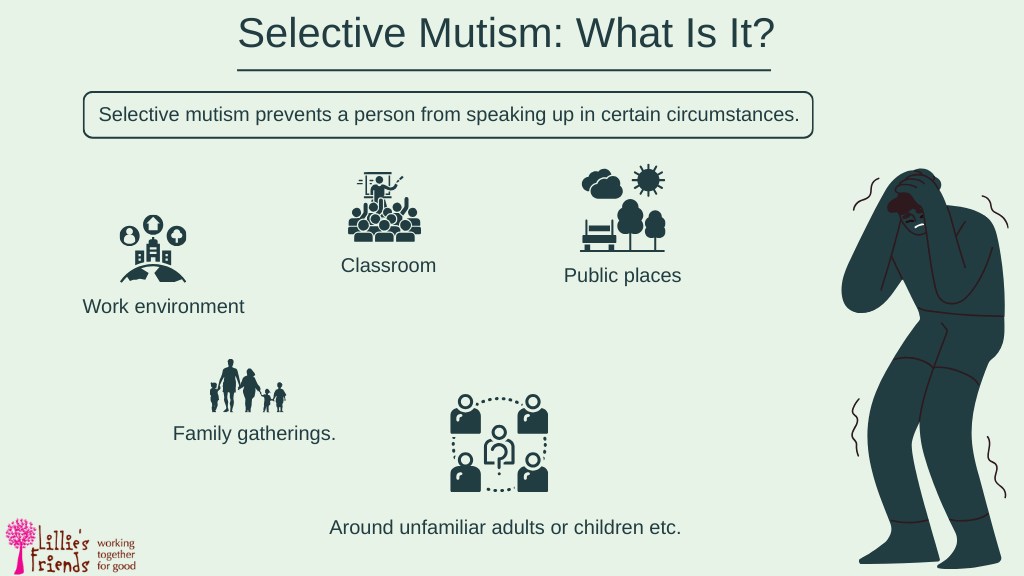
How is Selective Mutism Treated in Adults?
Adults with selective mutism get multimodal therapy. The main treatments for this mental health issue are counseling and medication, much as for the majority of anxiety disorders.
Treatment for Selective Mutilation
Several treatments are in use to address speech difficulties in specific contexts. These include the following successful treatments:
Therapy based on cognitive behavior (CBT)
Cognitive behavioral therapy, or CBT ↗, is a problem-solving, action-oriented talking treatment that aids in patients’ understanding of the disease. Under the supervision of a licensed therapist, adults may acquire various coping mechanisms to handle stressful events that cause selective mutism. Several behavioral strategies are used to enhance speech abilities in certain contexts, such as
- Self-modeling is the process of creating audio and video records of individuals acting appropriately in settings in which they have previously remained quiet. We often play the recordings during treatment sessions to help patients become accustomed to hearing themselves speak in a variety of settings.
- Systematic desensitization is a method that exposes patients to anxiety-inducing situations progressively, progressing from milder to more potent triggers. Image sequences and real-life exposures to challenging circumstances make up the treatment. This approach constructs an interventional hierarchy for dreaded speaking occurrences.
- Interacting with a group of strangers in a controlled setting helps shape behavior. It makes use of interactive board games and aloud reading as examples of activities. Then, to get over selective mutism, one-on-one conversations with other individuals take precedence.
- Interpersonal Skills Interpersonal skills training involves the acquisition of essential social skills under the guidance of a therapist. For people with selective mutism, it helps them engage in challenging discussions and lessen their social anxiety. Among other things, the training aids in the development of abilities including maintaining eye contact, initiating and carrying on a conversation, and interpreting nonverbal clues.
- The behavioral strategy known as “contingency management” entails recognizing and rewarding good vocal conduct in adults rather than encouraging silent behavior.
Psychodynamic Counseling
The main emphasis of psychodynamic therapy is on in-depth examinations of the personal elements that influence and determine behavior. The aim is to assist the patient in seeing how memories from the past impact behavior in the present. It assists in resolving internal issues that may have originated from a difficult upbringing. Psychodynamic treatment can shed light on the ingrained childhood factors that could be the primary cause of adult selective mutism.
Family Counseling
When internal family variables are important in the development and reinforcement of selective mutism, family therapy may be very helpful in such instances. Parental and sibling cooperation and understanding go a long way toward helping the youngster overcome avoidance and anxiety. Treatment for avoidant and anxious behavior may be more successful when friends and family are involved.
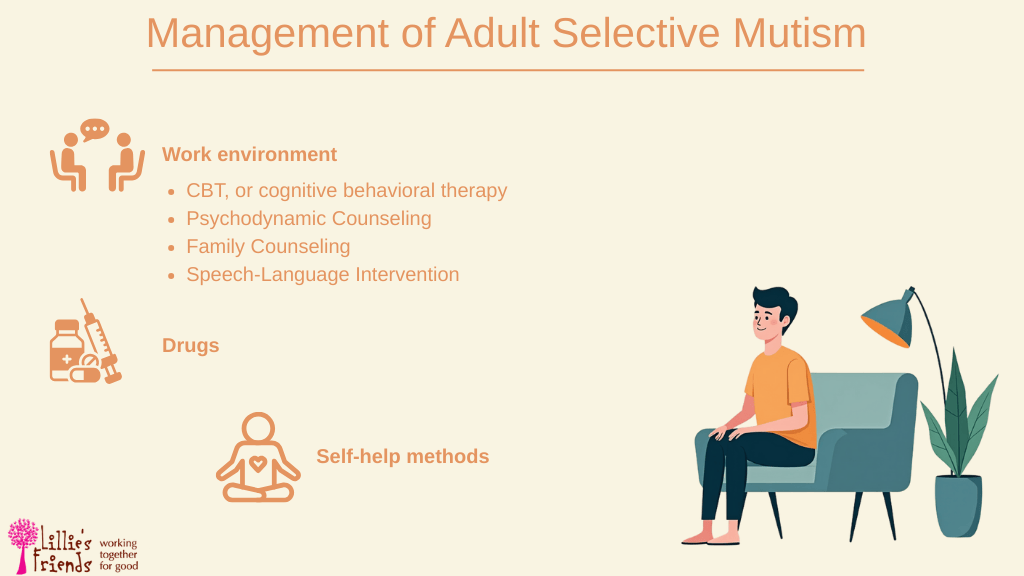
Therapy for Speech-Language
Experts often recommend speech-language therapy for individuals with selective mutism, in addition to behavioral therapy. It makes people more at ease while conversing in awkward circumstances.
Drugs
Adults with selective mutism are often treated pharmacologically with antidepressants such as selective serotonin inhibitors (SSRIs). In some circumstances, these drugs assist people in breaking through the speech barrier by regulating the neurochemical levels in the brain, which enhances mood and cognitive function. When provided alongside therapy and counseling, they are much more advantageous. Several case reports have reported a reduction in selective mutism symptoms due to the use of SSRIs. For treating muted behavior, fluoxetine ↗ and fluvoxamine ↗ are the most often given drugs.
Self-Help Advice
You may use some self-help techniques to lessen the signs of silent conduct.
- Introduce yourself to social settings little by bit. People who have selective mutism may find it difficult to cope in certain social circumstances. Avoiding these circumstances, however, will simply serve to perpetuate the harmful habit. As a result, it’s essential to engage in social activities of any kind, no matter how little, before advancing to more difficult social situations. It will assist in lessening the susceptibility to possible stimuli that result in silent conduct.
- Speak with people you know while you’re out in public. The next course of action would be to have a conversation in public with someone you feel at ease with. It can be a member of your family or a friend. Your confidence to speak in front of an audience or to strangers will grow as a result.
- Recognize nonverbal cues. It is preferable to communicate in whatever manner you can when faced with difficult circumstances rather than saying nothing at all. In this situation, useful communication tools come into play and facilitate dialogue without the need for direct speech. Some useful gestures to use include pointing, nodding, smiling, miming, making eye contact, etc. When you feel more at ease, you may eventually attempt interacting with gestures in addition to small chat.
- Give yourself a reward when you achieve little goals. Giving oneself a reward is a kind of positive reinforcement that may support and sustain beneficial behavior changes in you. Therefore, it’s best to make your public speaking experience more fulfilling by adding a prize.
Final Words
According to the DSM-V, selective mutism is an uncommon anxiety condition that is often seen in youngsters but may also be diagnosed in adults. Its defining trait is its incapacity to carry on a discussion in a particular setting. If left untreated, selective mutism may have negative effects on one’s social and academic life, as well as emotional and medical assistance.

